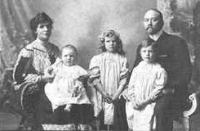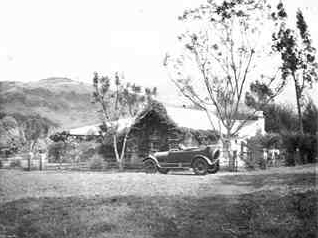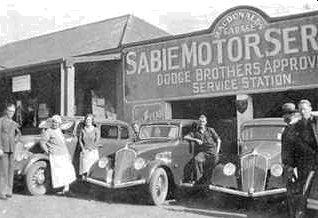A very, very long time ago .......
The
earliest inhabitants of the eastern escarpment region were the
Bushmen (San people) as can be deduced from the rock paintings,
engravings, artifacts and stone tools found in the area.
Early Iron Age sites indicate that they, apart from introducing
the basic concepts of farming, were also working metals.
Smelting furnaces and slag found during archaeological
excavations at some of their settlements prove this.
People from the late Iron Age, which ended with the Difaqane
(mid-nineteenth century), left terraced stone-walled complexes
(as are also found in other parts of southern Africa).
A long time ago .......
The first immigrants to the eastern part of the escarpment belonged
to the Basutu-Bafadi (a Sesotho speaking group), who had moved
southwards along the interior plateau. Simultaneously, Nguni speaking groups
were moving southwards, east of the Lebombo mountains. One of
these groups was the Swazi, who settled in what is now known as
Swaziland after eliminating most of the Basuto-Bafadi groups
they encountered there. The remaining Basuto then fled
back northeast to form the Ba-ka-Ngomane. They were
eventually defeated and/or absorbed by consecutive raiding Zulu,
Swazi and Shangaan warring parties in the 1820's.
One of the Sesotho speaking groups - of the MaPai tribe - under
chief Lesisi first found refuge in the caves near MacMac, before
fleeing to Sekukuniland (Steelpoort area) under the control of
chief Sekwan. When this group decided to return to the
Sabie river area in 1882, they found that the area had been
populated by Europeans after the discovery of gold at MacMac and
Pilgrim's Rest in 1873.
Then came the white man ......
 Due to it's high altitude the area has always been malaria-free. For this reason
pioneers in days of old used the area for their base camps when hunting and exploring down
into the Lowveld. The river was often in flood and teemed with crocodiles, hence the
local Shangaan people called it uluSaba - "the river of fear". It is
from this Shangaan word that the town's name was derived.
Due to it's high altitude the area has always been malaria-free. For this reason
pioneers in days of old used the area for their base camps when hunting and exploring down
into the Lowveld. The river was often in flood and teemed with crocodiles, hence the
local Shangaan people called it uluSaba - "the river of fear". It is
from this Shangaan word that the town's name was derived.
 During a hunting expedition in 1871, led by the famous hunter - Henry Thomas Glynn - a stray
bullet chipped a rock and revealed a rich gold reef. This started a gold-rush into the
area and soon many indigenous forests were destroyed to supply firewood and later mine props.
During a hunting expedition in 1871, led by the famous hunter - Henry Thomas Glynn - a stray
bullet chipped a rock and revealed a rich gold reef. This started a gold-rush into the
area and soon many indigenous forests were destroyed to supply firewood and later mine props.
 Fortunately the far-sighted Joseph Brook Shires realized that man-made forests would be
necessary. He planted the first commercial trees in 1876 and today Sabie is surrounded
by one of the world's largest man-made forests.
Fortunately the far-sighted Joseph Brook Shires realized that man-made forests would be
necessary. He planted the first commercial trees in 1876 and today Sabie is surrounded
by one of the world's largest man-made forests.
During the depression years (1929 to 1932) the Government launched
vast afforestation schemes in the area with a view to providing
employment to thousands of farmers who had succumbed under the
14 years drought and the world financial collapse of 1929.
In 1906 the inhabitants of Pilgrim's Rest voluntarily forfeited
their township and fiscal rights, which were given to Sabie instead.
On 24th September 1915 the first health committee met for the
first time in Sabie under the chairmanship of H.T. Glynn. Sabie
was officially proclaimed a health committee area on 1st January
1916 and eight years later (on 1st January 1924) Sabie was
proclaimed a village council.
Recommended books about the history of the area:
- Pioneers of the Lowveld. By Hans Bornman. ISBN
0-9583165-8-9
- Valley of Gold. By A.P. Cartwright. ISBN 0 86978 043
3
- Jock of the Bushveld. By Sir Percy Fitzpatrick


 Due to it's high altitude the area has always been malaria-free. For this reason
pioneers in days of old used the area for their base camps when hunting and exploring down
into the Lowveld. The river was often in flood and teemed with crocodiles, hence the
local Shangaan people called it uluSaba - "the river of fear". It is
from this Shangaan word that the town's name was derived.
Due to it's high altitude the area has always been malaria-free. For this reason
pioneers in days of old used the area for their base camps when hunting and exploring down
into the Lowveld. The river was often in flood and teemed with crocodiles, hence the
local Shangaan people called it uluSaba - "the river of fear". It is
from this Shangaan word that the town's name was derived.
 During a hunting expedition in 1871, led by the famous hunter - Henry Thomas Glynn - a stray
bullet chipped a rock and revealed a rich gold reef. This started a gold-rush into the
area and soon many indigenous forests were destroyed to supply firewood and later mine props.
During a hunting expedition in 1871, led by the famous hunter - Henry Thomas Glynn - a stray
bullet chipped a rock and revealed a rich gold reef. This started a gold-rush into the
area and soon many indigenous forests were destroyed to supply firewood and later mine props.
 Fortunately the far-sighted Joseph Brook Shires realized that man-made forests would be
necessary. He planted the first commercial trees in 1876 and today Sabie is surrounded
by one of the world's largest man-made forests.
Fortunately the far-sighted Joseph Brook Shires realized that man-made forests would be
necessary. He planted the first commercial trees in 1876 and today Sabie is surrounded
by one of the world's largest man-made forests.